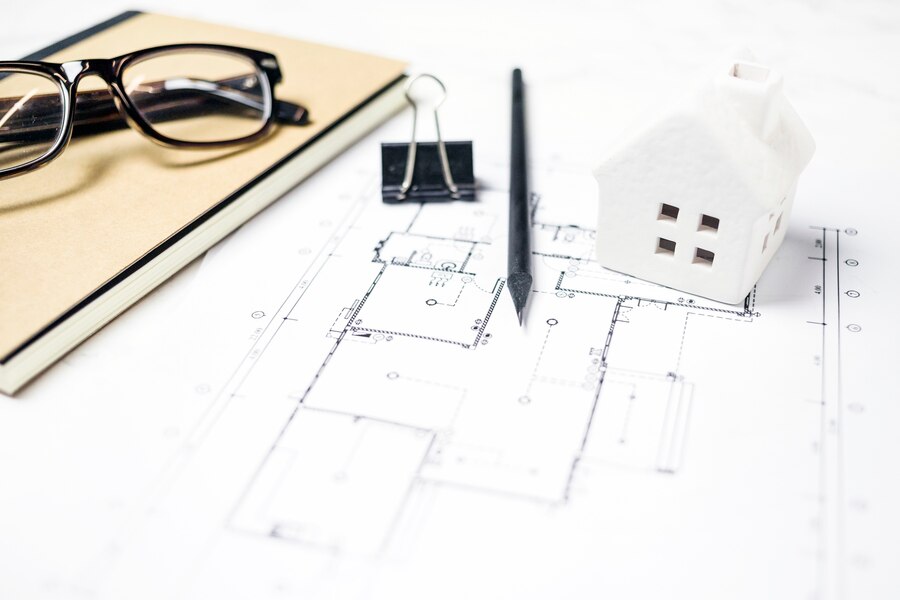Introduction
Interior design is the art and science of enhancing the interior of a space to create a more aesthetically pleasing and functional environment. It involves the manipulation of spatial volume as well as surface treatment to improve the quality of living or working spaces. Interior designers work with clients to understand their needs and preferences and then develop design solutions that are both practical and visually appealing.
Who is an Interior Designer?
Interior design is a highly sought-after career in India, attracting professionals skilled in enhancing building interiors to create visually appealing environments. Collaborating closely with clients, interior designers gather requirements and develop design concepts tailored to their needs. Upon completing an interior design course, students acquire knowledge of physics, creativity, innovation, and artistic skills.
For those aspiring to pursue a career in interior design, dedication and innovation are key. Continuous improvement, seeking new opportunities, and developing distinctive design styles are essential for success in this field.
What are the roles of an Interior Designer?
You must be wondering what it means to be an interior designer. Here are some of the roles that you have as an interior designer.
Concept Development
Interior designers meet with clients to understand their needs, preferences, and budget constraints. This consultation is crucial for gathering information on the client’s lifestyle, tastes, and specific requirements for the space. Following this, designers engage in space planning, analyzing how the area will be used and optimizing the layout to enhance flow and functionality.
Design Development
Once the initial concepts are approved, interior designers move into the design development stage. They create detailed design plans, including floor plans, elevations, and 3D models, to comprehensively represent the project. This phase involves the careful selection of materials and finishes, such as paint colours, fabrics, flooring, and lighting.
Project Management
Effective project management is a critical role for interior designers. They manage the project budget, ensuring expenses remain within the allocated limits and seeking cost-effective solutions where necessary. Scheduling is another key aspect, as designers create timelines for project completion and coordinate with contractors, suppliers, and other professionals to ensure the timely delivery of materials and services.
Coordination and Collaboration
Interior designers frequently work alongside architects, builders, and engineers to ensure their designs are structurally feasible and comply with all technical requirements. This collaboration ensures that every aspect of the project, from plumbing to electrical systems, is seamlessly integrated into the design.
Sustainability and Accessibility
Modern interior design often emphasizes sustainability and accessibility. Designers incorporate eco-friendly materials and energy-efficient solutions to create environmentally responsible spaces. They also consider universal design principles to ensure the space is accessible to all individuals, including those with disabilities.
Styling and Decoration
The final stage of an interior design project involves styling and decoration, where designers add the finishing touches that bring the space to life. This includes arranging furniture, placing accessories, and selecting artworks that complement the overall design. For real estate purposes, designers may stage the property, creating a visually appealing environment that highlights the space’s potential and helps potential buyers envision living there.
Documentation and Compliance
Interior designers prepare detailed drawings, specifications, and documentation required for construction. Compliance with building codes, safety regulations, and accessibility standards is paramount, and designers ensure that their projects meet all legal requirements to avoid any issues during construction and inspection processes.
Technology Integration
Incorporating technology into interior design has become increasingly important. These tools enable designers to visualize and present their concepts effectively. Additionally, integrating smart home technology, such as smart lighting, security systems, and home automation, enhances the functionality and convenience of modern living spaces.
How to become an Interior Designer in India?
Educational Pathway
Focus on art, design, drawing, and computer-aided design (CAD) classes. Take business and communication courses if available. Start a portfolio with your sketches and design projects to showcase your work. Enroll in an accredited interior design program for a comprehensive education, preferably a bachelor’s degree.
Developing Skills and Knowledge
Study design principles, colour theory, and spatial planning, and learn technical skills like CAD software and 3D modelling. Gain knowledge about materials, finishes, building codes, safety regulations, and accessibility standards. Develop strong communication skills for client interactions, creativity for innovative designs, and attention to detail for precision in your work.
Gaining Experience
Gain practical experience through internships during or after your studies. Start in entry-level positions like design assistant to build experience and learn from experienced professionals. Continuously update your portfolio with work from your coursework, internships, and jobs. Ensure it is well-organized and professionally presented.
Career Advancement
Join professional organizations like the American Society of Interior Designers (ASID) or the International Interior Design Association (IIDA). Attend industry events to build connections and stay updated on trends.
Consider specializing in areas like residential, commercial, sustainable, or hospitality design to differentiate yourself. Advanced certifications can further enhance your expertise and marketability.
Starting Your Own Business
Acquire marketing, management, and finance skills if you plan to start your own firm. Develop a strong brand and online presence to attract clients. Learn effective client management, including handling contracts and project timelines. By following these steps and continually improving your skills, you can build a successful career in interior design.
Salary Of An Interior Designer In India
The salary of interior designers in India varies based on factors like experience, location, education, and project type. Entry-level designers with 0-2 years of experience typically earn between ₹2,00,000 and ₹4,00,000 annually. As designers gain experience (2-5 years), their salaries increase to approximately ₹4,00,000 to ₹8,00,000 per year.
Senior designers with over five years of experience earn ₹8,00,000 to ₹15,00,000 or higher annually. Freelance designers have varied earning structures, including per-project rates. Location significantly affects salaries, with major cities offering higher pay due to living costs and demand. Education and specialization impact earning potential, with advanced degrees or certifications leading to higher salaries.
Overall, interior designers’ salaries reflect a combination of experience, location, education, and specialization, highlighting the diverse factors influencing compensation in the industry.
Career Path Progression for Interior Designer
Education and Training
The journey to becoming an interior designer typically starts with formal education. Aspiring designers should obtain a degree in interior design, which can range from an associate’s to a bachelor’s or master’s degree, preferably from an accredited program.
Entry-Level Positions
After completing their education, designers often begin their careers in entry-level positions such as design assistant or junior designer. In these roles, they support senior designers by performing tasks like drafting designs, sourcing materials, creating mood boards, and assisting with client presentations.
Mid-Level Positions
With 2-5 years of experience, designers typically advance to roles with greater responsibility. As interior designers, they start managing their own projects, making design decisions, and directly interacting with clients. Some may also transition into project management roles, overseeing the entire design process, coordinating with contractors and vendors, and managing budgets and timelines.
Senior-Level Positions
Designers can move into senior roles after gaining substantial experience (5-10 years). Senior interior designers lead large projects, mentor junior team members, and significantly maintain client relationships. In larger firms, some may advance to design director or studio manager positions, where they oversee multiple projects, set design standards, manage design teams, and contribute to the firm’s strategic direction.
Specialization and Advanced Roles
Many designers choose to specialize in specific areas, such as sustainable design, hospitality design, or healthcare design. Specialization can lead to higher recognition and better salary prospects due to the specific expertise required.
Entrepreneurship and Consultancy
With extensive experience, some designers opt to start their own design firms. This path requires business acumen, marketing skills, and a strong professional network. Running their own firm allows for creative freedom and the ability to build a personal brand.
Leadership and Education
Experienced interior designers may transition into teaching sharing their knowledge at design schools or universities.
What is the workplace/work environment of Interior Designer like?
Interior designers work in diverse environments, often in design studios, firms, or their own offices. These spaces serve as creative hubs where designers collaborate, brainstorm ideas, and develop design concepts. Client meetings are regularly held either in-office, at client locations, or virtually, fostering positive relationships and ensuring project alignment. Site visits are crucial, allowing designers to assess project conditions and oversee construction progress, ensuring design plans are executed accurately.
Material and product selection is vital, involving research, sourcing, and coordination with suppliers to meet project requirements and budget constraints. Additionally, designers manage various project aspects such as budgeting, scheduling, and contractor coordination, ensuring projects are executed efficiently.
The work environment encourages creativity, innovation, and collaboration, with designers exploring new ideas and developing innovative design solutions. Open-plan workspaces facilitate communication and collaboration among team members, fostering a supportive and engaging atmosphere. Designers often work on multiple projects simultaneously, each with unique challenges and opportunities, providing a dynamic and stimulating work environment.
FAQs
How to become an interior designer after 12th?
To become an interior designer after completing 12th grade, you can pursue a Bachelor’s degree in Interior Design or Interior Architecture from a recognized institute or university. Look for institutions offering relevant courses and apply for admission. Some institutes may require you to clear an entrance exam or submit a portfolio showcasing your creativity and skills.
How long does it take to become an interior designer in India?
In India, it typically takes around 3 to 4 years to become an interior designer. This includes completing a Bachelor’s degree program in Interior Design or Interior Architecture, which usually spans 3 to 4 years. After graduation, you may also choose to gain additional experience through internships or apprenticeships to further enhance your skills and knowledge in the field.
What are some common interior design subjects?
Common subjects covered in interior design courses include Design Fundamentals, Architectural Drawing, Interior Design Studio, Furniture Design, Color Theory, Building Systems, History of Interior Design, and Sustainable Design. These subjects provide a comprehensive understanding of interior design principles, preparing students for a career in the field.




